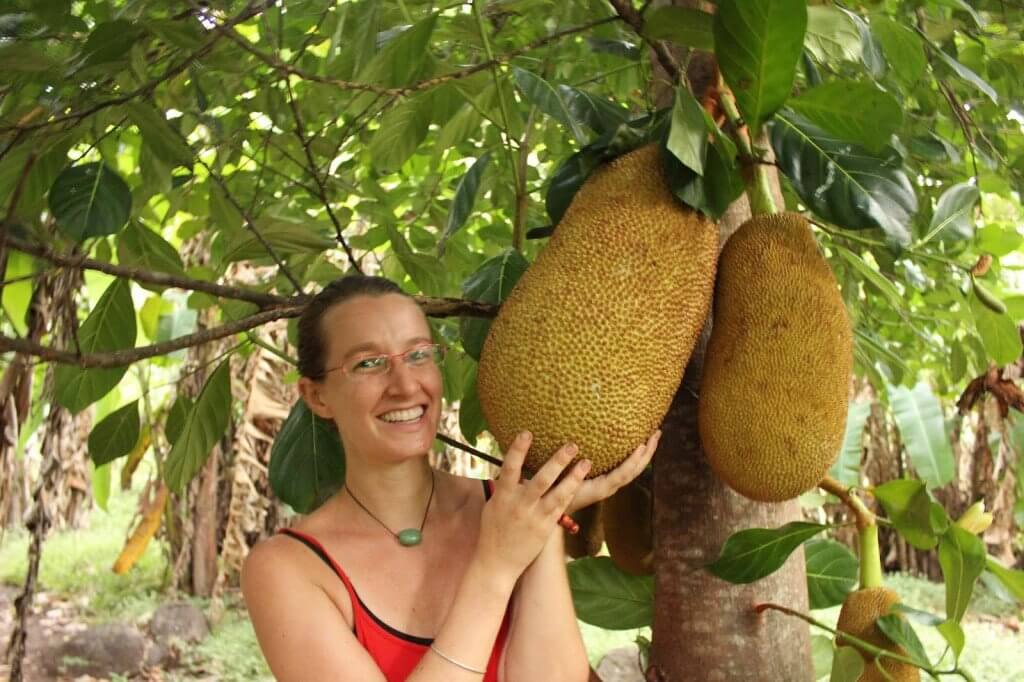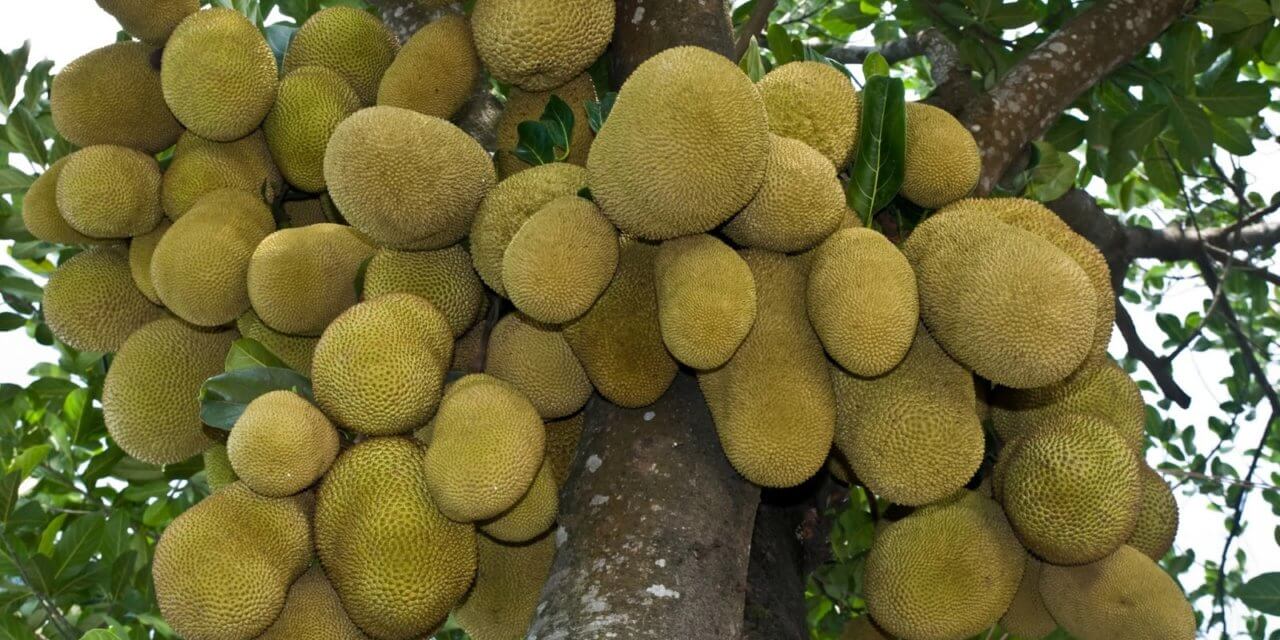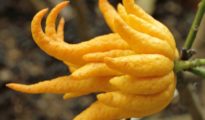Learn how to grow jackfruit from seed with this easy to follow DIY gardening guide and you'll have your own jackfruit tree in no time! Jackfruit is a tropical fruit that is native to South and Southeast Asia. The fruit is technically classified as a drupe, which means that it has a hard outer shell with a soft, fleshy interior. Jackfruit can grow to be quite large—some have been known to weigh in at over 100 pounds! The exterior of the fruit is green and bumpy, and the fleshy interior is pale yellow and studded with small black seeds. When ripe, jackfruit is sweet and often used in desserts. However, it can also be used in savory dishes when unripe.

Uses for Jackfruit
Jackfruit can be used in both sweet and savory dishes. When ripe, the flesh of the fruit is very sweet and often compared to the taste of mango or pineapple. It can be eaten fresh, canned, or dried. Ripe jackfruit is often used in desserts such as pies, ice cream, and pudding. It can also be used as a meat alternative in savory dishes such as curry or stir-fry. When unripe, jackfruit has a subtle flavor and firm texture that makes it a good stand-in for meat in vegetarian dishes.
Cultivation of Jackfruit
Jackfruit trees are evergreen trees that can grow to be 30 feet tall. They bear fruit once a year, and each tree can produce up to 200 fruits per season! Jackfruit trees need warm temperatures and lots of moisture to thrive. They are typically found in tropical regions such as India, Bangladesh, Sri Lanka, Indonesia, and Malaysia.
How to Grow Jackfruit From Seed
Jackfruit trees are fast-growing, and they will begin to bear fruit three to five years after planting. The trees are evergreen and can live for up to 100 years. When growing jackfruit from seed, it is best to start with fresh seeds. You can purchase fresh jackfruit seeds online or from a garden center.
To plant the seeds, fill a seed-starting tray with compostable starting mix. Place one seed in each cell of the tray, and then water the Seeds lightly. Place the tray in a warm location such as on top of a refrigerator or near a heater. Keep the Seeds moist but not soggy, and within two weeks, they should sprout.
Once the seeds have sprouted, transplant them into individual pots filled with potting soil. Water the young plants regularly, and place them in a sunny location such as a south-facing window. When the plants are six inches tall, transplant them into larger pots or into the ground in an area that gets full sun.
How to Fertilize Jackfruit
Fertilize the jackfruit trees monthly with an all-purpose fertilizer during the first year after planting. After that, fertilize three times per year using a low-nitrogen fertilizer such as manure tea or composted leaves. Water the trees deeply once per week during dry periods.
Jackfruit Pests & Diseases
The most common pest that affects jackfruit trees is the scale insect. Scale insects attach themselves to the tree and suck the sap from the leaves and stems. This can weaken the tree and make it more susceptible to disease. Scale insects can also spread diseases from one tree to another. Another common pest is the caterpillar. Caterpillars eat the leaves of the jackfruit tree, which can also weaken the tree.
Some diseases that affect jackfruit trees include root rot, leaf spot, and fruit rot. Root rot is caused by a fungus that attacks the roots of the tree. This can make it difficult for the tree to absorb water and nutrients from the soil. Leaf spot is caused by a fungus that affects the leaves of the tree. This can cause brown or black spots to appear on the leaves. Fruit rot is caused by a fungus that affects the fruit of the tree. This can cause the fruit to become soft and mushy.
Whether you're looking for a new fruit to add to your dessert repertoire or you're searching for a vegetarian-friendly meat alternative, jackfruit might be just what you're looking for! This large tropical fruit has a unique taste and texture that makes it versatile enough to use in both sweet and savory dishes. So why not give jackfruit a try the next time you're in the mood for something new? Your taste buds will thank you! Now that you know how to grow jackfruit from seed, it's time to roll up your sleeves and get to planting!



















